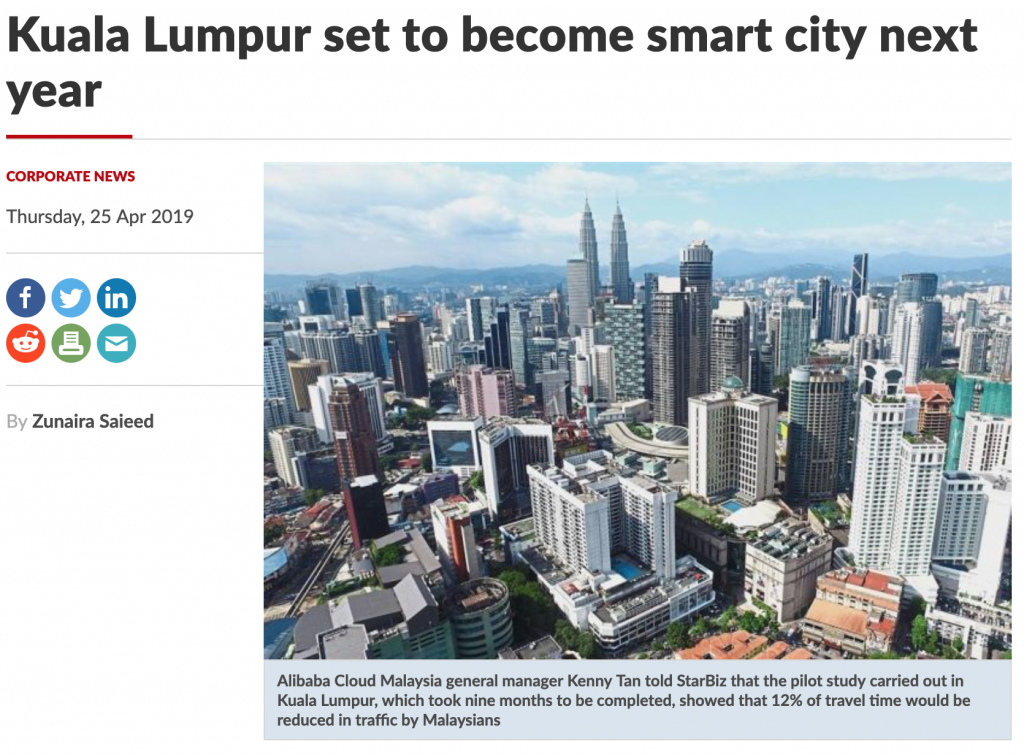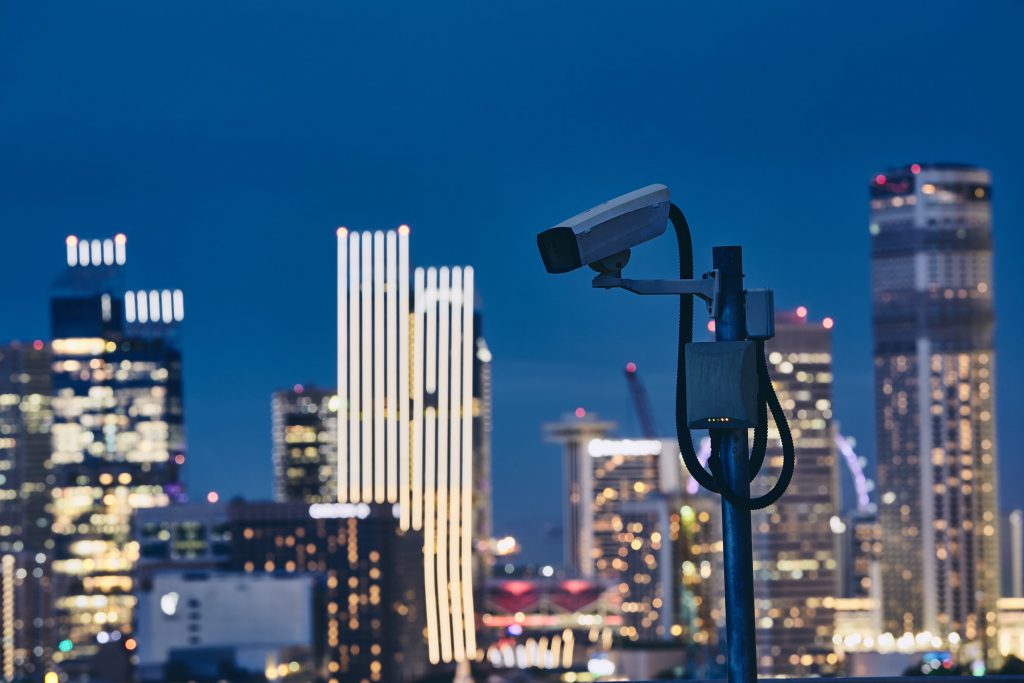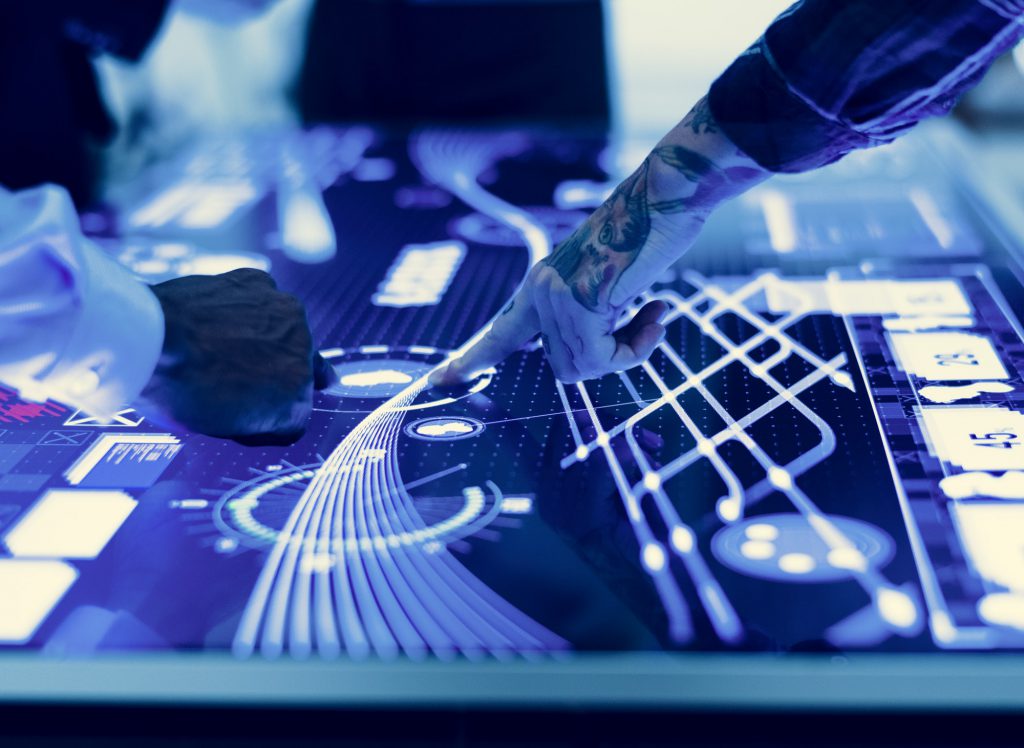I was interviewed by BFM to talk about the latest issue in the smart city. In relation to the news where MDEC talks about launching the City Brain Kuala Lumpur, powered by Alibaba.

MDEC website says City Brain, a system that acquires and analyses big data to make better decisions for the community. I felt like many decisions that we are making these days are kind of robotic and, it only requires a couple of seconds if a human were to decide.
Let’s use the hackathon favourite issue, pothole, as an example. If we have an infrastructure and the data to support, we can automatically inform city council, and schedule the maintenance with JKR automatically, when someone reported a pothole and receive enough upvotes (i.e. likes). That can be extended into use cases like traffic monitoring and garbage collection as well. Like Professor Andrew Ng from Deeplearning.AI once said,
Anything that takes a human 2-3 second to do, can soon be replaced by A.I.
Areas of Smart City Applications
For most people in KL and Selangor, our #1 concern will still be traffic, then public utilities like water supply and the Internet. On top of the surveillance application that is already in place, we should also have applications in the areas of event detections.
As a web developer and a product person, I would like to see many of the existing information to become more updated and accessible. For example, public transport timetable, service quality, and air quality.
We should also be given better access to existing services that tighten the interaction and engagement between communities. At the end of the day, we should tie the KPI of a smart city to what really makes our citizen happy.
Security and Privacy
Like it or not, everything that we do today is leaving behind digital footprints as we use the Internet. The messages that we sent (including private messages), the websites that we browse, and the photo that you liked.
Think about it, credit card companies have long been collecting our data and perform data mining for different use cases. On the marketing side, they use it to predict customer acquisition, retention targets, and churn prevention. On the business side, the data is also used for fraud detection.

Many also called the smart city a surveillance city, and there are a lot of different voices and opinions around this. I believe that as we move towards a more digitized era, it is unavoidable that the government will have a lot more data of every citizen.
In fact, the data points of an individual do not mean much to a service provider, or the government, unless something bad happens. What government really wants to know is how to those big data to help them to manage the country better, and answer questions like:
- Why is the property price of a residential dropped suddenly? It is because of the crime rate of a particular area has gone up?
- Why is there a sudden spike of flu medicine sale?
- Should we start to monitor and track influenza?
That’s what the government cares. What we should do is to work closely with the government, giving them constructive feedback on what the rakyat wants, and build a healthy process that helps us to move towards a developed country.
What concerns me is that we are collecting data without any context, and not knowing what to do with these data.
Are we reinventing the wheel?
As reported, the focus of Brain City is to reduce traffic. But,
How is this different from navigational apps like Waze? If our cities are already connected via big data apps, how does this go one step further than what we already have?
Waze is not just a navigation app. Not only does Waze tell you how to get from point A to point B, but, it also tells you how to get there in the shortest time. In the smart city context, the smartness of Waze is to help us to ease the traffic by optimizing the number of cars across all the possible routes.
Therefore, I don’t think the Brain City project is reinventing the wheel. Although some might argue that we might have driverless cars soon. Even if all cars are able to be linked via mobile apps, I don’t think driverless cars will happen anytime soon.
Perhaps, before we get to using driverless cars as a mode of transport, we will some intermediate solutions like remote driving cars.
Can we use A.I. for other applications in a smart city?

Apart from traffic monitoring and public transport, I love to see A.I. be used in legal and healthcare in a smart city. My lawyer friends spend a considerable amount of time going through cases, drafting contracts, affidavits, and waiting for legal processes that are always pending.
Many of these workflows can be streamlined in the coming years when technology like A.I is more matured, and also technologies like Blockchain are finally able to deliver their promises.
Imagine a person who met a fatal accident on the road, and we can identify his identity, blood type, and allergies instantly. Then the ambulance comes and able to pick the best route, send him to the nearest hospital to receive treatment on time. This will significantly reduce the number of unnecessary death, and medical costs for the government.
Is Smart City for everyone?
Another question that concerns the public is that our cities are still looking for solutions like universal access for people with disabilities and the elderly, and also the last mile problem for public transport. In the interviewers’ word:
Do we need to solve these problems before aspiring to become a smart city?
In my opinion, these issues should always be the top priority, it is outside the question of whether we are becoming a smart city, or not. We have been working on different solutions like MRT, OKU parking, public facilities, and elderly care programs, way before we have the smart city concept.
Becoming a smart city should help us in addressing these issues more effectively, and should not affect the priority at all.
How would a smart KL city look like? How do we get there?

The Smart KL City blueprint that I have in mind is that people should go out as little as possible.
With the connectedness that 5G is bringing to us, government services and activities like learning and teaching should be able to be done online, instead of face to face. This is like a software v.s. hardware issue, even thou the hardware and infrastructure are ready, but our mindset is not.
In order to get there, I look forward to government agencies, companies and corporates to take their operations online, and also allow remote working, or at the very least, flexible working hours. This will alleviate the pain of a large group of people needing to move together at the same time.


0 Comments